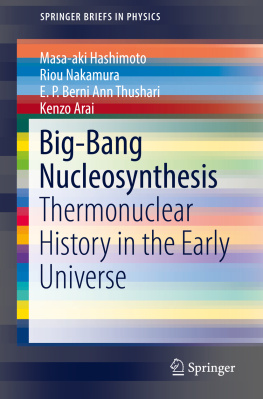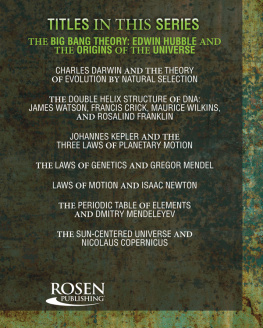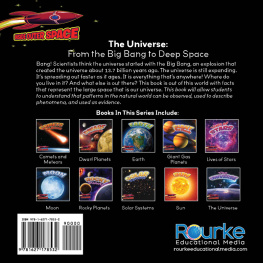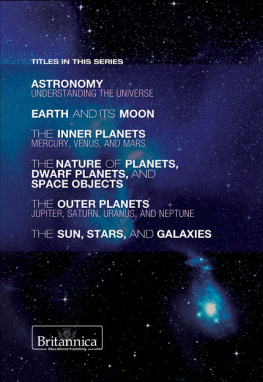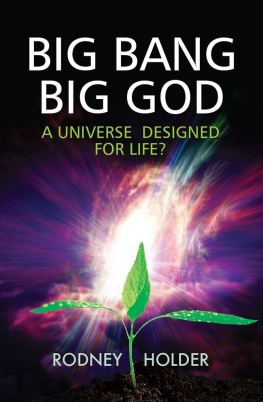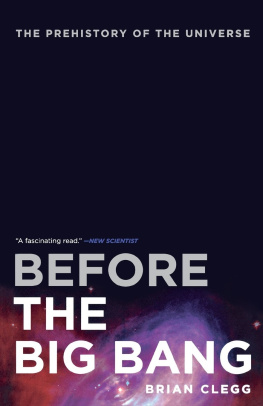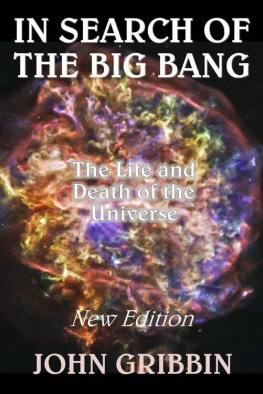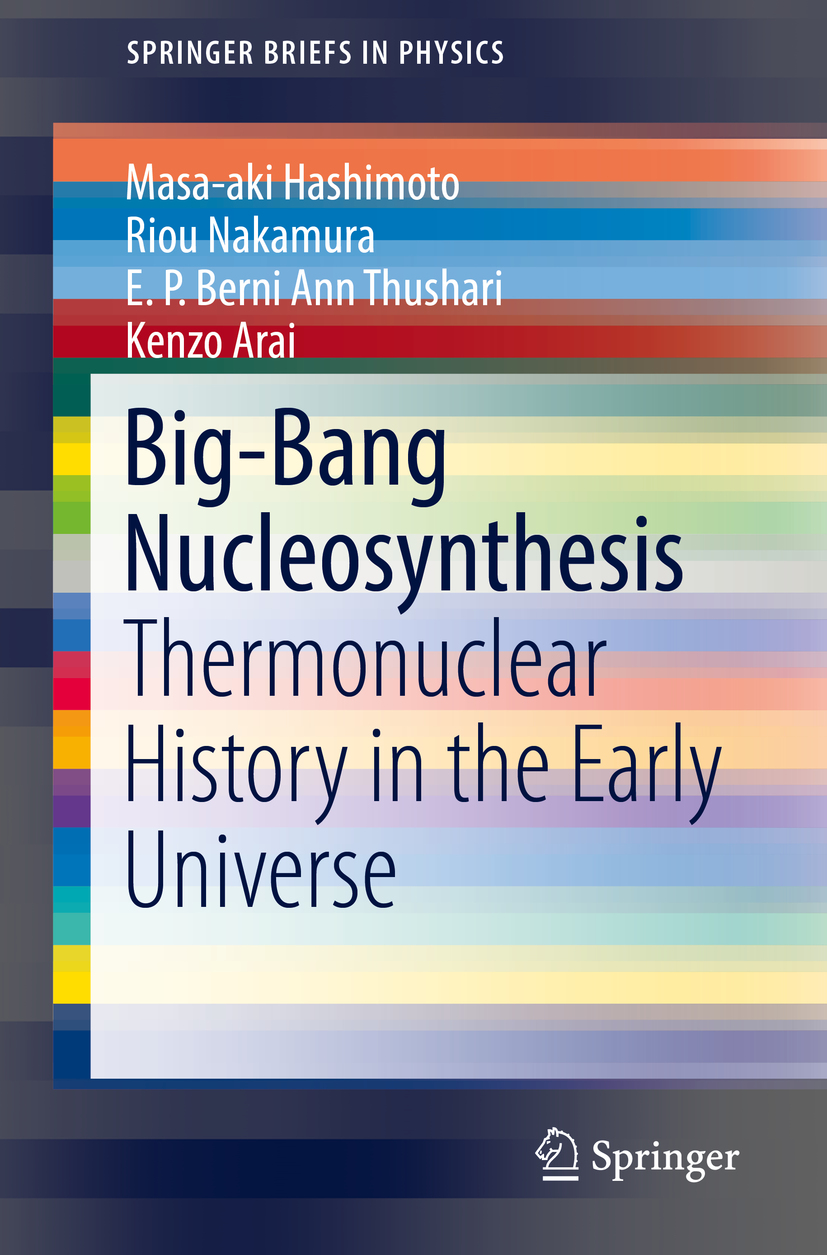SpringerBriefs in Physics
Series Editors
B. Ananthanarayan
Centre for High Energy Physics, Indian Institute of Science, Bangalore, India
Egor Babaev
Amherst, MA, USA
Malcolm Bremer
Bristol, UK
Xavier Calmet
Department Of Physics and Astronomy, University of Sussex, Brighton, UK
Francesca Di Lodovico
London, UK
Pablo D. Esquinazi
Institute for Experimental Physics II, University of Leipzig, Leipzig, Germany
Maarten Hoogerland
Auckland, New Zealand
Eric Le Ru
School of Chemical and Physical Sciences, Victoria University of Wellington, Kelburn, Wellington, New Zealand
Hans-Joachim Lewerenz
Pasadena, CA, USA
James Overduin
Towson, MD, USA
Vesselin Petkov
Montreal, QC, Canada
Charles H.-T. Wang
Department of Physics, The University of Aberdeen, Aberdeen, UK
Andrew Whitaker
Belfast, UK
Stefan Theisen
Max-Planck-Institut fr Gravitationsphys, Potsdam, Germany
Dario Narducci
University of Milano Bicocca, Milano, Italy
More information about this series at http://www.springer.com/series/8902
Masa-aki Hashimoto , Riou Nakamura , E. P. Berni Ann Thushari and Kenzo Arai
Big-Bang Nucleosynthesis Thermonuclear History in the Early Universe
Masa-aki Hashimoto
Department of Physics, Kyushu University, Fukuoka, Japan
Riou Nakamura
Kurume Institute of Technology, Fukuoka, Japan
E. P. Berni Ann Thushari
Department of Physics, Kyushu University, Fukuoka, Japan
Kenzo Arai
Department of Physics, Kumamoto University, Kumamoto, Japan
ISSN 2191-5423 e-ISSN 2191-5431
SpringerBriefs in Physics
ISBN 978-981-13-2934-0 e-ISBN 978-981-13-2935-7
https://doi.org/10.1007/978-981-13-2935-7
Library of Congress Control Number: 2018959104
The Author(s), under exclusive license to Springer Nature Singapore Pte Ltd. 2018
This work is subject to copyright. All rights are reserved by the Publisher, whether the whole or part of the material is concerned, specifically the rights of translation, reprinting, reuse of illustrations, recitation, broadcasting, reproduction on microfilms or in any other physical way, and transmission or information storage and retrieval, electronic adaptation, computer software, or by similar or dissimilar methodology now known or hereafter developed.
The use of general descriptive names, registered names, trademarks, service marks, etc. in this publication does not imply, even in the absence of a specific statement, that such names are exempt from the relevant protective laws and regulations and therefore free for general use.
The publisher, the authors and the editors are safe to assume that the advice and information in this book are believed to be true and accurate at the date of publication. Neither the publisher nor the authors or the editors give a warranty, express or implied, with respect to the material contained herein or for any errors or omissions that may have been made. The publisher remains neutral with regard to jurisdictional claims in published maps and institutional affiliations.
This Springer imprint is published by the registered company Springer Nature Singapore Pte Ltd.
The registered company address is: 152 Beach Road, #21-01/04 Gateway East, Singapore 189721, Singapore
Preface
The origin of elements has been one of the most interesting issues in science, because it is closely connected with that of ourselves and the solar system. At present, this subject is considered to be related to the evolution of the universe. The Big Bang model, based on the theory of General Relativity, has proven to be the most reliable theory to describe the evolution of the universe. This is supported by the following observational facts: the expansion of the universe, the cosmic microwave background (CMB) radiation with a tiny fluctuation in temperature, and the primordial abundance of light elements, 4 He, D, and 7 Li.
Among many kinds of books concerning the Big Bang theory, we present a book which includes a detailed description of Big Bang nucleosynthesis (BBN) whose theme has not been explained well so far. BBN is the interdisciplinary field which incorporates nuclear physics, elementary particle physics, and astronomy. In particular, it is indispensable to obtain important information on the earth, such as the results of experiments by particle accelerators and observational findings from stars and galaxies. Originally, nucleosynthesis in the early universe had been studied fully by nuclear (particle) physicists, which were based on experimental data of nuclear fusion and -decays. The basic idea that the light elements could be produced during the BBN epoch the first 3min still holds now.
We are now in an amazing stage of development in modern cosmology. To derive matter density of the universe, we need to measure the mass of a typical galaxy and intergalactic distance. To this end, we climb up the cosmic distance ladder from the mean distance between the Earth and the Sun, 1.510 13 cm, to the size of the large-scale structure of the universe, 10 26 cm, which is an interesting and instructive subject on observational cosmology in its own right. Nevertheless, using calculated abundance of BBN, the matter density of baryons except dark matter is determined with great accuracy from the observed primordial abundance of D.
In this book, we start to make introductory explanations of General Relativity and physical processes which are necessary to construct a model of the Big Bang universe. Moreover, to explain the consistency between the calculated and observed abundances of light elements, we must explore many physical possibilities. In particular, we emphasize the importance of the idea beyond the standard BBN, because fundamental questions of both dark matter and dark energy are not answered at all.
This book is meant to become a survey of the state of physical cosmology, including observational and theoretical parts that establish the subject as a mature physical science and the more notable attempts to improve and extend the picture. The goal of this book is to present theoretical bases and applications of BBN. Readers can appreciate the current status of BBN and acquire techniques to calculate nucleosynthesis. As a result, they obtain a new idea for BBN in the framework of modern cosmology. The contents include a basic curriculum of physics, that is, mechanics, thermodynamics, quantum mechanics, and statistical physics. If a reader is unfamiliar with General Relativity, we recommend to skip complicated expressions, because he or she can comprehend the fundamental concept of BBN without the intricate formulae. Thus, most of this book is accessible to people who have studied physics to an advanced level at university; we hope that not only graduated students but also undergraduates would become familiar with BBN and receive inspiration from the early universe.
We are grateful to Katsuhiko Sato for providing his original code of BBN calculations and many useful discussions about nucleosynthesis inclusively. Thanks are due to Fraser Watson for reading through a draft of the manuscript. We also thank many graduated students who have enjoyed investigating cosmology together.

